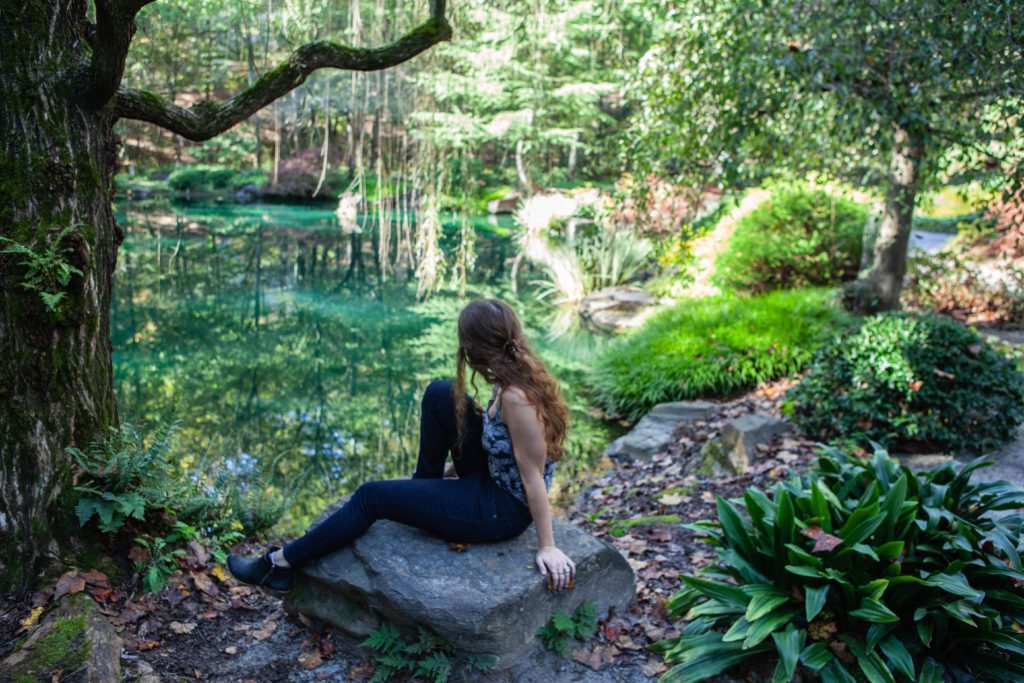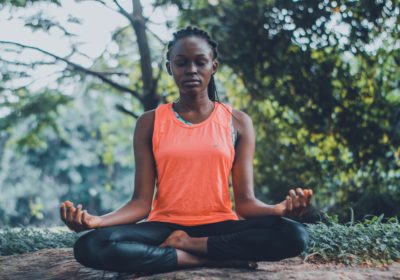
Mindfulness is a buzzword these days. You may think of pretty girls wearing good vibes t-shirts while practicing yoga and drinking green smoothies.
Although there is absolutely nothing wrong with that image (I might not be far off from it), mindfulness is not just for the modern-day yogi. Anybody can practice mindfulness, and I would argue that everybody should.
There’s a difference between somebody telling you to be present and understanding what being present truly feels like. Without tools to practice mindfulness, it’s hard to figure out how to deconstruct it. If you struggle with anxiety, this may be an even harder task since a lot of your time is spent inside your own mind worrying about things.
Before you know it you haven’t spent even one minute outside your own mind, and it can get really frustrating. Learning how to be mindful is more simple than you may think.
Being mindful teaches you to step outside of your mind and be aware of the happening world around you.
What is mindfulness?
Mindfulness has been in use for thousands of years through various religious traditions and in modern times through non-religious meditation. The basics of mindfulness can be learned by practicing meditation. Mindfulness only recently became well-known in western culture when the scientific-based benefits were brought to light.
Simply put, being mindful is listening and paying attention. Listening to your body and how it feels. Listening to the world and how it sounds. Listening to your mind and what it says. Paying attention to whatever arises.
Mindfulness for Anxiety
As you broaden your non-judgemental awareness, you may begin to notice how out of control your mind really is. Your thoughts are urgently racing when you experience anxiety. Although we are mostly unable to control our thoughts, we can control how we react to those thoughts.
The real battle that perpetuates anxiety is giving thoughts too much power. We may then react to negative thoughts through resistance or the need to control them.
The practice of mindfulness allows the acceptance of thoughts for precisely what they are…thoughts. Thoughts are as involuntary as your breath, and as out of control as noise you hear in your environment.
“Mindfulness is awareness that arises through paying attention, on purpose, in the present moment, non-judgementally.”
Jon Kabat-Zinn
The basics of practicing mindfulness
Technology has made it easier than ever to learn mindfulness techniques through meditation apps, lessons, and guides. I have learned many of my mindfulness techniques through lessons and meditations from Sam Harris’ meditation app Waking Up.
Below are 4 basic steps to practicing mindfulness.
Listening to your body and how it feels.
What does it feel like to have a body? Are there any sensations? We often tend to filter this information out of our conscious experience. Take a moment to become aware of the pressure, tingling, temperature, or weight of your body. The awareness of sensations will help to ground you in the present moment.
Listening to the world and how it sounds.
What can you hear? Just observe the noises around you as they come and go. Notice how you cannot control the sounds you hear. For me, the sense of hearing has been the most significant aid to guide me to the present and the most prominent teacher for letting go of control.
Listening to your mind and what it says.
Accepting the mind can be particularly tricky. Although we can control some thoughts, most are involuntary. Unlike sound and sensation, we have the illusion that we are in control of the mind. It can be frustrating when we begin to crack this illusion.
When a thought arises, observe it in the same way you observed the sounds you heard earlier. Look at the thought without judgment and without resistance. Allow all thoughts even intrusive thoughts. Observe the way you’re feeling. It may be concerning the thought of for no reason at all. Notice where the feeling sits in the body.
Paying attention to whatever arises.
Once you learn these basics all you need to do is open your mind and become aware. You’re actually doing less than you usually do. Just do nothing, lift the veil of illusion and observe the world as it has always been- blissfully out of your control.
Easy Steps to be Mindful Today
Using mindfulness is shown to have positive psychological effects such as increased well-being, reduced mental health symptoms, less emotional reactivity, and better behavioral regulation. Practicing all the steps of mindfulness can seem overwhelming in regular daily tasks. The more you practice, the easier it will.
Below are some easy tips for introducing mindfulness into your life that take a little effort.
- Listen carefully in conversations with others.
We often think about our side of the conversation when communicating with other people. Social anxiety can also internally focus our attention on nervousness and over analysis of our own behavior. Introduce mindfulness by intently listening to what somebody is telling you. Focusing acutely on what they’re saying brings you out of your own mind and into the present. It can make you feel more connected with others and more aware of how to respond in a situation
- Feel the weight of your body.
We quickly process out the way it feels to be pulled down by gravity since it is a sensation we consistently experience. Take a moment to pay attention to the pressure this phenomenon induces. It can be a grounding moment in your day to take notice of one of the purest forms of mindfulness.
- Count five inhales and five exhales
Breath in. Focus your awareness of the way it feels for the air to come into your body, fill your lungs and expand your chest. Breath out. Focus on the natural way the air is pushed out of your body. Inhale and exhale for five breaths while paying attention to the way it feels the whole time. This technique can be especially useful when experiencing moments of anxiety. You may find a deep sense of peace that your body does this all day on its own. Return to the awareness at any time.
- Close your eyes and listen to the sounds around you
Really zone in on what the environment around you sounds like. Each noise comes and goes on its own. It can teach you to accept things as they are and allow yourself to really observe life as it is happening right now.
- Notice how you feel and where it lives in the body
There is a type of freedom that comes with separating yourself from your thoughts and feeling. When we become overwhelmed with emotion or thought, it often feels like we are what we experience. Perspective comes as you separate yourself from the emotion or thought that moves through you. When a strong feeling arises, take a step back and really observe it. What does it feel like in the body? How do you know you are feeling that emotion? It can be a curious and enlightening experience.
My Mindful Journey with Anxiety
I have practiced mindfulness meditation for 60 days straight. After ten days of meditation, I experienced what some people may call an awakening experience, and I truly grasped how being present felt.
As a person with a lot of anxiety, I typically spend much of my time in my mind. In the moments of awakening, I felt like I was stepping out of my mind and into the world for the first time. I felt more creative and connected to others.
Slowly a fear inside me grew that I wouldn’t be able to keep this peace. My anxiety recognized this fear and the changes that were taking place. The concern grew into an obsession, Part of me thought I didn’t deserve this world that I found and that it was too much change.
It’s hard to change the way your mind works after reacting a certain way for years. I have been resisting and trying to control my thoughts for as long as I can remember.
Mindfulness was a beautiful lesson, but that doesn’t mean it was easy. It still isn’t easy. This lesson is an ongoing process that takes continual effort to change my relationship with thoughts.
I make a conscious effort to accept anyway I am feeling – including negative feelings like fear and doubt. I’ve become less reactionary to my thoughts, although there are still times when they overcome me. I have a clearer perspective of how I’m feeling and decide how I want to react.
I am much better at separating myself from my thoughts and my feelings. I am no longer an anxious person but a person that is experiencing anxiety. The anxiety no longer owns me.




[…] awareness, a pillar of mindfulness, supports the capacity to see a situation for what it is rather than the emotional perception of a […]